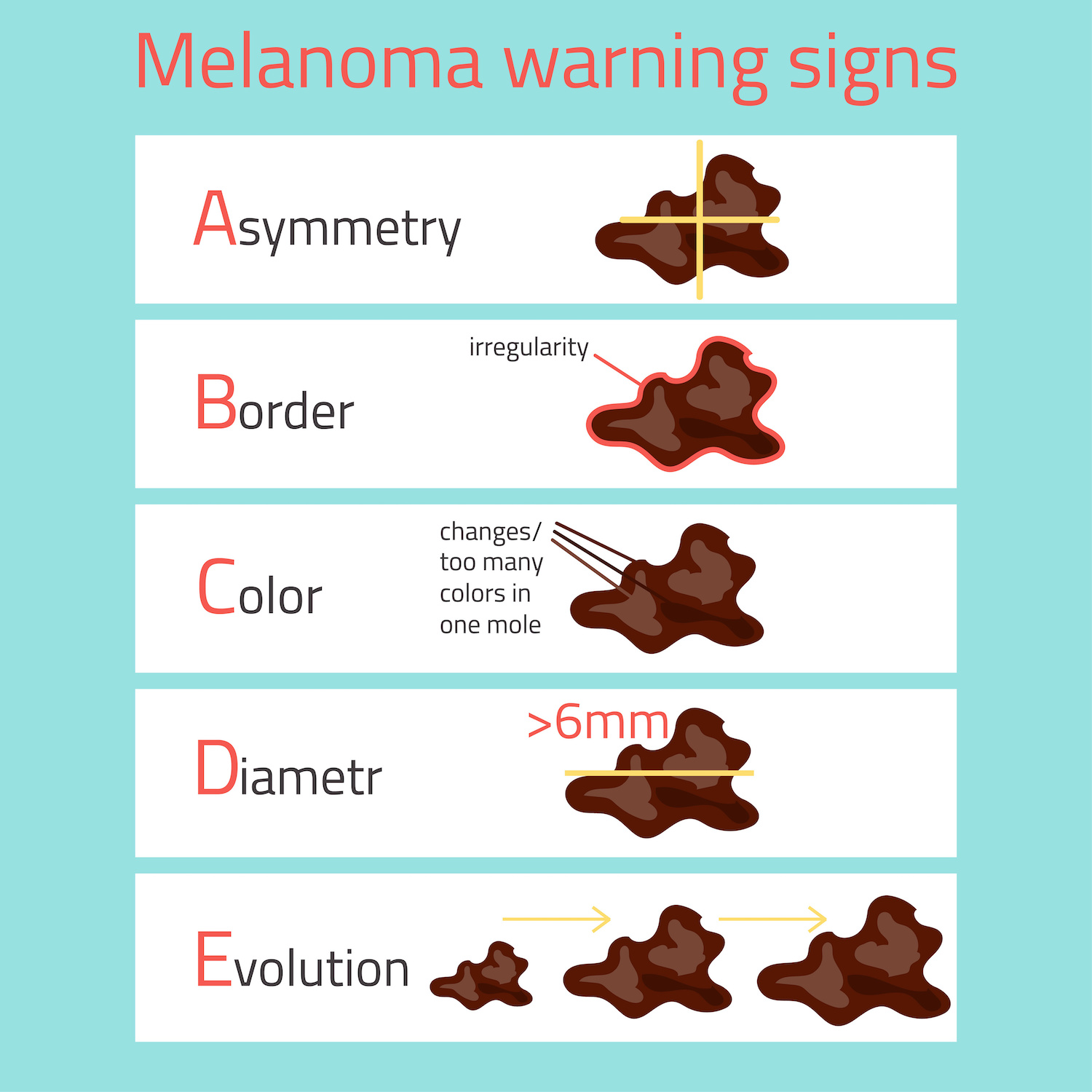New Brunswick, N.J., August 3, 2021 – With an estimated 5.4 million skin cancer diagnoses in the U.S. every year according to the American Cancer Society, it is important that you not only protect yourself from the sun’s ultraviolet (UV) rays, but also regularly check your skin for anything out of the ordinary.
Plan Ahead First
When identified early, nearly all skin cancers can be cured with treatment. The effects of UV radiation can damage skin leading to the development of skin cancer. Adopting a common-sense approach to prevention through lifestyle choices that include sun-protective measures will reduce your risk of developing skin cancer. Strategies to reduce the risk of skin cancer include limiting your time outdoors when the sun is at its most harmful (between 10am and 4pm), covering up as much as possible with sunglasses, hats and long sleeves, and using a sunscreen of SPF 30 or higher on exposed areas.
How to Check for Skin Cancer
While freckles and moles are often harmless, it is important to perform regular self-exams and follow the ABCDEs as a guide to help you recognize the warning signs of skin cancer.
A is for Asymmetry. Non-cancerous moles are typically symmetrical in shape. Draw a line through the middle of the lesion to see if the two halves match.
B is for Border. Non-cancerous moles usually have smooth, well-defined boarders while cancerous boarders tend to have uneven or scalloped edges.
C is for Color. Non-cancerous moles are typically one color. Cancerous moles may have different shades of brown, tan or black. As it grows, the colors red, white or blue may also appear.
D is for Diameter. It is a warning sign if a lesion is the size of a pencil eraser (about 6 mm, or ¼ inch in diameter) or larger.
E is for Evolving. Any change in size, shape, color or elevation of a spot on your skin, or any new symptom in it, such as bleeding, itching or crusting, may be a warning sign.
If you have been out in the sun and notice any of these unusual changes in your skin, it is important to have it checked out. Any concerning skin lesion or change in moles should be promptly evaluated by a physician, preferably a dermatologist, to assess the need for a biopsy
Visit our Skin Cancer and Sun Safety page for more information on skin cancer awareness and prevention. As New Jersey’s only National Cancer Institute-designated Comprehensive Cancer Center, Rutgers Cancer Institute, together with RWJBarnabas Health, provides comprehensive multidisciplinary care to patients diagnosed with skin cancer and helps individuals learn about skin cancer awareness and prevention.
Vadim Koshenkov, MD, is a surgical oncologist in the Melanoma Oncology Program at Rutgers Cancer Institute of New Jersey and an assistant professor of surgery at Rutgers Robert Wood Johnson Medical School.
For journalists – contact:
Krista Didzbalis
Media Relations Assistant
908-812-6114
krista.didzbalis@rutgers.edu
For patient appointments/inquiries – contact:
844-CANCERNJ (844-226-2376)


